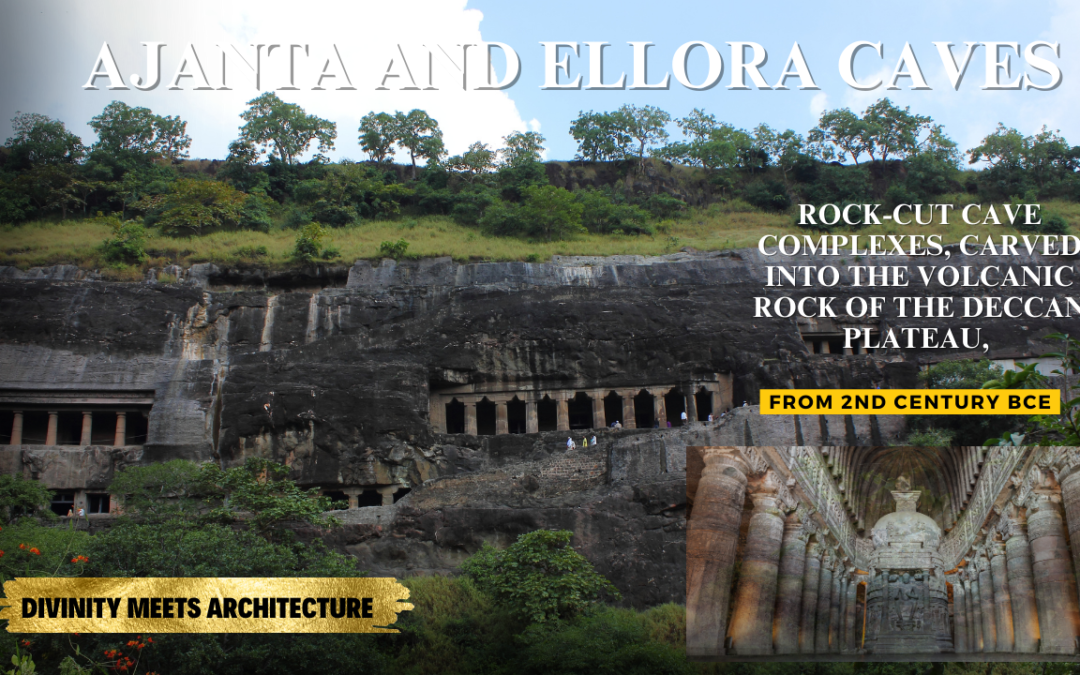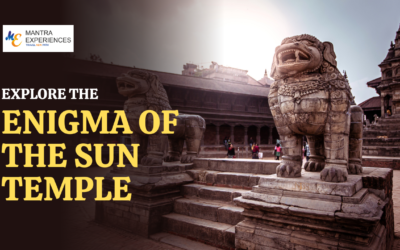Ajanta and Ellora Caves: India’s Ancient Artistic Treasures
Tucked away in the heart of Maharashtra, India, the Ajanta and Ellora Caves are not mere geological formations; they are portals to India’s rich cultural heritage and spiritual depth. Carved into the rocky landscapes, these UNESCO World Heritage Sites are a testament to the artistic prowess and devotion of ancient Indian craftsmen. Join us on a journey as we explore the structural marvels, historical significance, and the timeless artistry concealed within these exceptional cave complexes.
Structural Marvels
Ajanta Caves: Architectural Poetry The Ajanta Caves, dating back to the 2nd century BCE, comprise 30 rock-cut Buddhist cave monuments. These caves were ingeniously carved into the volcanic rock of the Sahyadri Hills. Each cave serves a unique purpose, with prayer halls (chaityas) and monastic cells (viharas) adorned with awe-inspiring sculptures and frescoes.
Ellora Caves: A Testament to Diversity Ellora, just a short distance away, is a complex of 34 caves that represent not only Buddhism but also Hinduism and Jainism. These caves, carved between the 6th and 11th centuries CE, showcase India’s religious diversity and architectural excellence. The grand Kailasa Temple (Cave 16) stands as a monolithic rock-cut marvel dedicated to Lord Shiva.
Historical Significance
Ajanta Caves: Preserving Ancient Artistry Ajanta’s caves, initially used by Buddhist monks, were later abandoned and forgotten. Rediscovered by a British officer in 1819, these caves provide a remarkable glimpse into the art, culture, and spirituality of ancient India.
Ellora Caves: A Fusion of Faiths Ellora’s caves represent India’s rich religious tapestry. Carved under the patronage of various dynasties, including the Rashtrakutas and Chalukyas, these caves signify the coexistence of different faiths in India’s history.
UNESCO World Heritage: Both Ajanta and Ellora Caves have been recognized as UNESCO World Heritage Sites, underscoring their cultural and historical significance on a global scale.
Spiritual Significance
Ajanta Caves: A Journey into Buddhism The Ajanta Caves are a living testament to the life and teachings of Lord Buddha. Intricate sculptures and vibrant frescoes depict his life and the Jataka tales, inspiring spiritual seekers and art enthusiasts alike.
Ellora Caves: A Sanctuary for Three Faiths Ellora’s caves house magnificent temples, monasteries, and shrines dedicated to Hindu, Buddhist, and Jain deities, showcasing India’s syncretic religious heritage.
Location: Ajanta and Ellora Caves are situated in the state of Maharashtra, India, making them easily accessible by air, train, or road from major cities like Mumbai and Aurangabad.
Weather Conditions: The best time to visit both cave complexes is during the winter months (November to February) when the weather is cool and pleasant.
Travel Tips
- Consider hiring a local guide to gain deeper insights into the history and significance of the caves.
- Respect the sanctity of the caves by not touching the sculptures or frescoes.
- Wear comfortable clothing and footwear suitable for walking and climbing stairs.
- Plan your visit to avoid crowds, especially during peak tourist seasons.
Conclusion: The Ajanta and Ellora Caves are not just architectural marvels; they are time capsules that preserve the art, culture, and spirituality of ancient India. A visit to these caves is a journey into the heart of India’s history, offering a profound experience that transcends time and space.
Prepare to be enchanted by the intricate carvings, vibrant frescoes, and the sense of tranquility that envelops these cave complexes. Ajanta and Ellora are more than just caves; they are gateways to the soul of India.
Itinerary Suggestions
Here are some itinerary suggestions for your visit to Ajanta and Ellora Caves :
Khajuraho Temple
Exploring the Magnificent Khajuraho Temple : A Journey Through Time Nestled in the heart of Madhya Pradesh, the Khajuraho Temples are iconic masterpieces of Indian temple architecture. Constructed between the 9th and 11th centuries, these temples hold secrets and...
Konark Sun Temple
Konark Sun Temple The Magnificence of Odisha's Iconic Gem Nestled in the heart of Odisha, the Konark Sun Temple is an iconic masterpiece of Indian temple architecture. Constructed in the 13th century by King Narasimhadeva to pay homage to the Sun God, Surya,...



